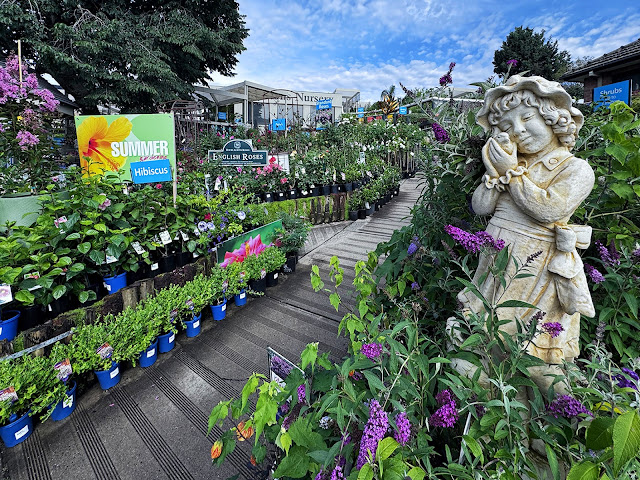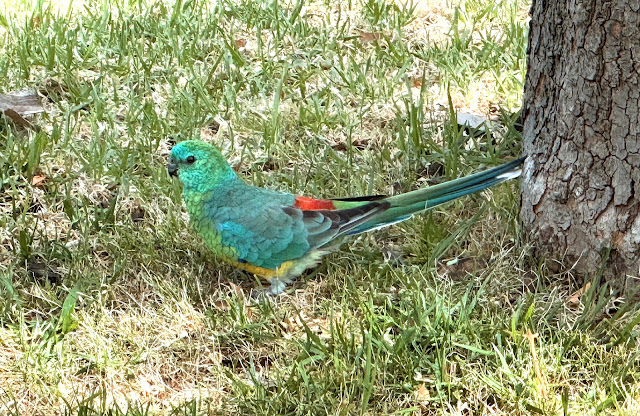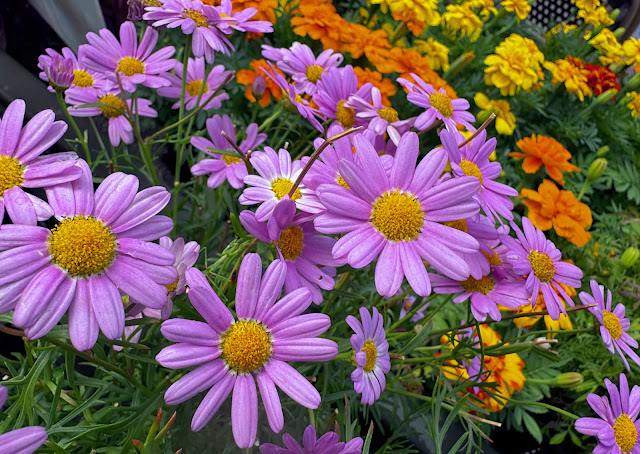This post is part of the Skywatch Friday meme.
Friday, 31 January 2025
Thursday, 30 January 2025
ZUCCHINI FLOWER
Wednesday, 29 January 2025
FUN IN THE SUN, MORNINGTON
and also part of the Wordless Wednesday meme,
and also part of the Nature Notes meme
Tuesday, 28 January 2025
AT THE PARKLANDS
Monday, 27 January 2025
SUMMER DAY
and also part of the Seasons meme.
Sunday, 26 January 2025
Saturday, 25 January 2025
NIGHT HERON
The nankeen night heron stands about 60 cm tall with a stooped appearance. It is a stocky heron with rich cinnamon upperparts, white-buff underparts, a black crown, and yellow legs and feet. The head is large, the neck short (giving a stooped appearance), and the legs relatively short. During breeding the back of the head bears three white nuptial plumes. The bill is dark olive-green, and the eyes are yellow. Young birds are heavily spotted and streaked white, brown and orange-brown. As they mature, the black cap of the adult develops first, with the body plumage remaining streaked for some time. It is not strictly nocturnal. It often feeds during the day, especially during wet weather.
The bird is dependent on a diet of small fish, reptiles, insects and sometimes eggs. It can be seen around freshwater rivers, lakes, bulrushes, estuaries, harbours and in residential fishponds for goldfish. The species breeds in the period from September to April, building a nest platform out of sticks. It nests communally, near water. Two to five light green eggs are laid, with a 22-day incubation followed by a 42- to 49-day fledging period. Widespread throughout its large range, the nankeen night heron is evaluated as Least Concern on the IUCN Red List of Threatened Species.
I've enhanced this photo in Photoshop as it was taken with the highest zoom on my phone camera and it turned out a little blurry.
Friday, 24 January 2025
NIGHT SKY
Thursday, 23 January 2025
DAHLIA HYBRID
Wednesday, 22 January 2025
MERRI CREEK IN SUMMER
Tuesday, 21 January 2025
Monday, 20 January 2025
NUMEROLOGY
and also part of the Seasons meme.
Sunday, 19 January 2025
Saturday, 18 January 2025
KOALA
Friday, 17 January 2025
Thursday, 16 January 2025
AT THE FLORIST
Wednesday, 15 January 2025
Tuesday, 14 January 2025
ROAD TRIP
Sunday, 12 January 2025
AT THE NURSERY
We visited Poynton's Nursery in Essendon this morning and it was absolutely marvellous. Huge range of plants, garden statues, fountains and water features, a café, and helpful, friendly staff. Not to forget two shops onsite with homewares and decorative items. Will go back there soon!
This post is part of the My Sunday Best meme.
Saturday, 11 January 2025
GRASS PARROT
Friday, 10 January 2025
Thursday, 9 January 2025
ARGYRANTHEMUM
Wednesday, 8 January 2025
SUMMER DAY
and also part of the Wordless Wednesday Meme
and also part of the Nature Notes Meme
 |
| Fishing in Mornington |
 |
| Brighton Bathing Boxes |
 |
| Sandringham Beach |
 |
| Williamstown Foreshore |
 |
| Dromana Pier |
Tuesday, 7 January 2025
CITY
A view towards Port Philip Bay from Southbank. Ever more high rise apartment blocks keep going up all in the name of progress...
This post is part of the Travel Tuesday meme.
 |
Monday, 6 January 2025
EXHIBITION
The Gallery Unbound is opening on the 8th January at 497 High St Northcote, 3070, Vic with an exhibition of works by four artists. One of them is me, @jammysevenk.
Come and join us at the celebration of the opening and meet the exhibiting artists at the Gallery on Friday January 10, 2025, 6-8 pm. I'll be glad to see you there.
This post is part of the Mosaic Monday meme
and also part of the Seasons meme.
Sunday, 5 January 2025
Saturday, 4 January 2025
COCKATOO
Friday, 3 January 2025
Thursday, 2 January 2025
MAGNOLIA
Wednesday, 1 January 2025
SUMMER
and also part of the Nature Notes meme.































